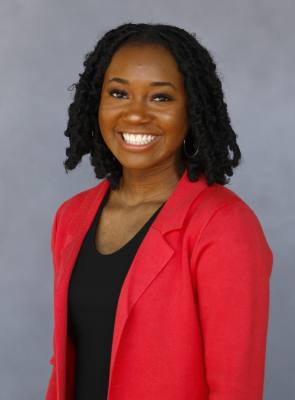The program, called Too Good for Drugs, launched at Evans Middle School at the beginning of September and will start at Malvern Elementary School at the end of October.
The curriculum stems from the Too Good series established by the Mendez Foundation, an organization that creates substance abuse and violence prevention programs for students in grades K-12.
A prevention specialist visits sixth grade classes at Evans every Tuesday, Wednesday and Thursday to teach the course, which takes place during a 30-minute block allotted for remediation or electives.
The first half of the 14-week course focuses on “establishing life goals or skills,” said Anthony Garcia, prevention specialist at the Coalition for McKinney Drug Free Youth. This includes objectives like setting measurable goals and making informed decisions in lieu of impulsive behavior.
The rest of the curriculum focuses on substances—primarily alcohol, nicotine, marijuana, opiates and prescription drugs.
Garcia is qualified to teach grades four through six. For elementary school students, he said the curriculum is less about substances and more about goal-setting, choosing friends, and building a foundation that encourages a drug-free lifestyle.
While Too Good for Drugs underscores the dangers of numerous substances, this is not the first time MISD has emphasized the effects of drugs such as nicotine.
Last year, the district launched an anti-vaping campaign after the number of student disciplinary referrals for tobacco quadrupled over a five-year period.
MISD’s data is consistent with a national trend. The National Institute on Drug Abuse conducts a yearly survey on substance abuse behaviors in eighth, 10th and 12th graders. The 2020 survey revealed that the percentage of teenagers who said they vaped nicotine in the past 12 months doubled from 2017 to 2019 in each grade level. “[Vapes] can be very concealable,” Garcia said. “So a lot of the time, the technical aspect of training is helping teachers be more aware of what vaporizers look like because they vary in shape, size [and] forms.”
In addition to vapes, Garcia said students frequently ask about the difference between medicine prescribed by their doctors—for example, ADHD or anxiety medication—and illegal substances. Another common question discusses legal drugs in moderation.
“Some students have that mentality that, 'Oh my parents say it's OK to have one or two beers,'” Garcia said. “But I've explained to them that it's OK for an adult to have one or two beers, but not growing children.”
Garcia said that his main job is to “move the needle.” At the beginning of the course, he administers a survey that evaluates students’ perceptions of harm. A sample question would be, “On a scale of one to five, how dangerous is marijuana?”
At the end of the 14 weeks, students will take the same survey to reveal how effective the program is. Last year, a pilot version of the program took place at Malvern Elementary, and survey results revealed that students’ knowledge of substance abuse improved during the course.
Eventually, Garcia said the coalition hopes to expand the program into as many MISD schools as possible. The coalition is also discussing taking the program to Allen, The Colony and Prosper.
Once the program grows, Garcia said it is up to school counselors and the coalition’s program director to determine which substances are appropriate to talk about at each campus.
“Some schools are more at risk for certain types of drugs—whether it be nicotine or alcohol—than others,” Garcia said. “A lot of factors go into play: the demographics of the school, level of income of the parents, availability, access.”





